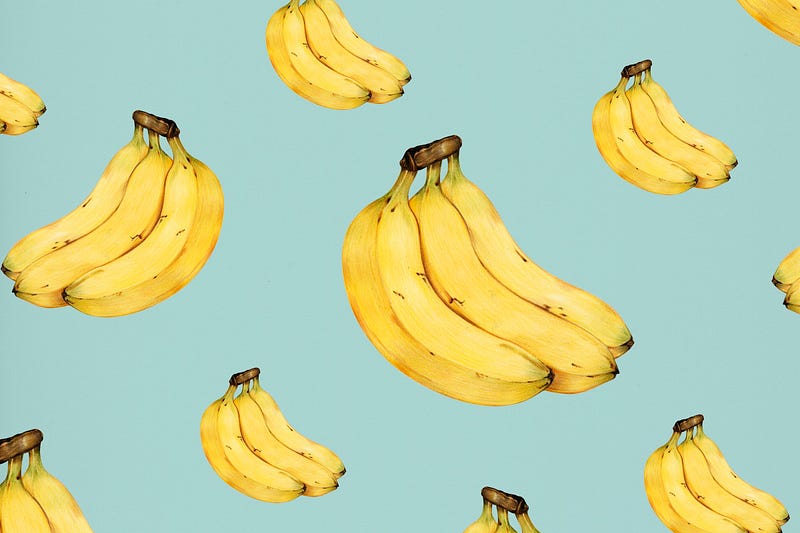Saving the Banana: A Race Against a Deadly Fungus
Written on
Chapter 1: The Crisis Facing Bananas
The banana, a staple fruit enjoyed worldwide, is facing a dire situation. Recent lab tests in Colombia confirmed the presence of a lethal fungus that has previously devastated banana plantations in regions like the Philippines and India. This discovery is alarming, especially since the bananas commonly sold in U.S. stores are genetically identical clones. Consequently, if one banana plant succumbs to the disease, neighboring plants are also at high risk.
In laboratories across the U.K. and Australia, researchers are racing against time to protect this beloved fruit before it’s too late. “It was widely believed in the industry that it was just a matter of time before the disease reached Latin America,” explains Gilad Gershon, CEO of Tropic Biosciences, a company dedicated to using genetic engineering to develop a fungus-resistant banana. Currently, the disease has only been detected in Colombia, where authorities have declared a state of emergency and destroyed affected crops. However, it is anticipated that it will soon spread to Ecuador, a major banana exporter to the U.S. and Europe. “It’s reasonable to expect that this will likely spread throughout Latin America in a few years,” he adds.
This scenario mirrors a historical crisis the industry faced decades ago. Until the 1950s, the Gros Michel banana, known for its superior taste and sweetness, dominated the market. However, a different strain of the same fungus led to its downfall. In response, banana companies turned to the Cavendish variety, which was resistant to the original fungal strain. While the Cavendish is now the most common banana variety, it is currently threatened by the Tropical Race 4 (TR4) strain of Panama disease, with no readily available alternative.
“The uniformity of the crop is striking,” notes Randy Ploetz, a plant pathologist at the University of Florida who was the first to identify the new fungus in bananas from Taiwan in the late 1980s. “When propagated, they use clonal methods, which creates monocultures of the same banana clone. This lack of diversity allows lethal pathogens like TR4 to spread rapidly, causing significant damage.” Although the disease does not render the fruit inedible, it disrupts the plant's ability to transport nutrients and water, eventually leading to its death. The fungus can remain in the soil for decades, preventing replanting once an outbreak occurs.
At Tropic Biosciences in the U.K., researchers employ CRISPR technology to experiment with various crops, including coffee. This gene-editing tool can precisely modify a plant's genome. In their quest to create a disease-resistant Cavendish banana, the team is utilizing an innovative method involving RNA interference genes, which can deactivate specific cellular functions. This technique allows them to target and silence genes in the pathogen itself. “This is a proactive approach to combatting the fungus,” says Eyal Maori, the chief science officer at Tropic Biosciences.
This method offers advantages over traditional gene editing. While identifying a banana gene for modification could take years, the team was able to pinpoint the target within just a few months. As this approach focuses on the pathogen rather than the banana itself, the essential qualities of the fruit, such as flavor and growth characteristics, should remain unchanged. Field tests are slated to begin next year. Importantly, because this technology is non-transgenic—meaning no foreign DNA is integrated into the banana—it is unlikely to be classified as genetically modified in the U.S.
In Australia, scientists are exploring a different strategy. After extensive research, they identified a gene in a wild banana that exhibits disease resistance and successfully incorporated this gene into the Cavendish variety. In a remote area near Humpty Doo, the team has conducted field trials, and after three years, they are now in the midst of larger-scale tests. The genetically modified banana could potentially hit the market within a few years, contingent on regulatory approvals. However, public acceptance remains uncertain. “Unfortunately, many consumers are hesitant to try genetically modified bananas, despite their safety,” remarks Ploetz. James Dale, a researcher at the Queensland University of Technology, is also developing a gene-edited variety that avoids the use of foreign DNA, which may increase its acceptance.
Some may question the necessity of these efforts to preserve the banana. While companies like United Fruit (now Chiquita) have fueled global demand, it could be argued that people outside tropical regions could revert to consuming local fruits. Yet, in many developing nations, bananas serve as a vital source of nutrition and have become integral to local economies. Bananas represent a $44 billion industry and are a significant source of employment. In 2018, the U.S. imported $2.8 billion worth of bananas, more than any other nation.
“The banana is crucial for global nutrition and provides livelihoods for countless individuals in developing countries,” Gershon emphasizes. “It underpins several economies worldwide. This is a serious challenge, and we are committed to finding a solution.”
Adele Peters is a staff writer at Fast Company, focusing on global issues ranging from climate change to social justice. Her previous experience includes roles at GOOD, BioLite, and the Sustainable Products and Solutions program at UC Berkeley, along with contributions to the bestselling book “Worldchanging: A User’s Guide for the 21st Century.”
Section 1.1: The Threat of Panama Disease
The emergence of Panama disease Tropical Race 4 is a pressing concern for the banana industry, threatening livelihoods and food security.

Section 1.2: Innovative Solutions in Genetic Engineering
Researchers are utilizing cutting-edge genetic engineering techniques to develop disease-resistant banana varieties.
Chapter 2: The Path Forward
The first video explores the urgency of addressing the potential extinction of bananas due to disease, discussing the implications for global food supply and economy.
The second video highlights scientists' efforts to breed a banana resistant to Panama disease, showcasing the innovative techniques being employed to ensure the future of this essential fruit.